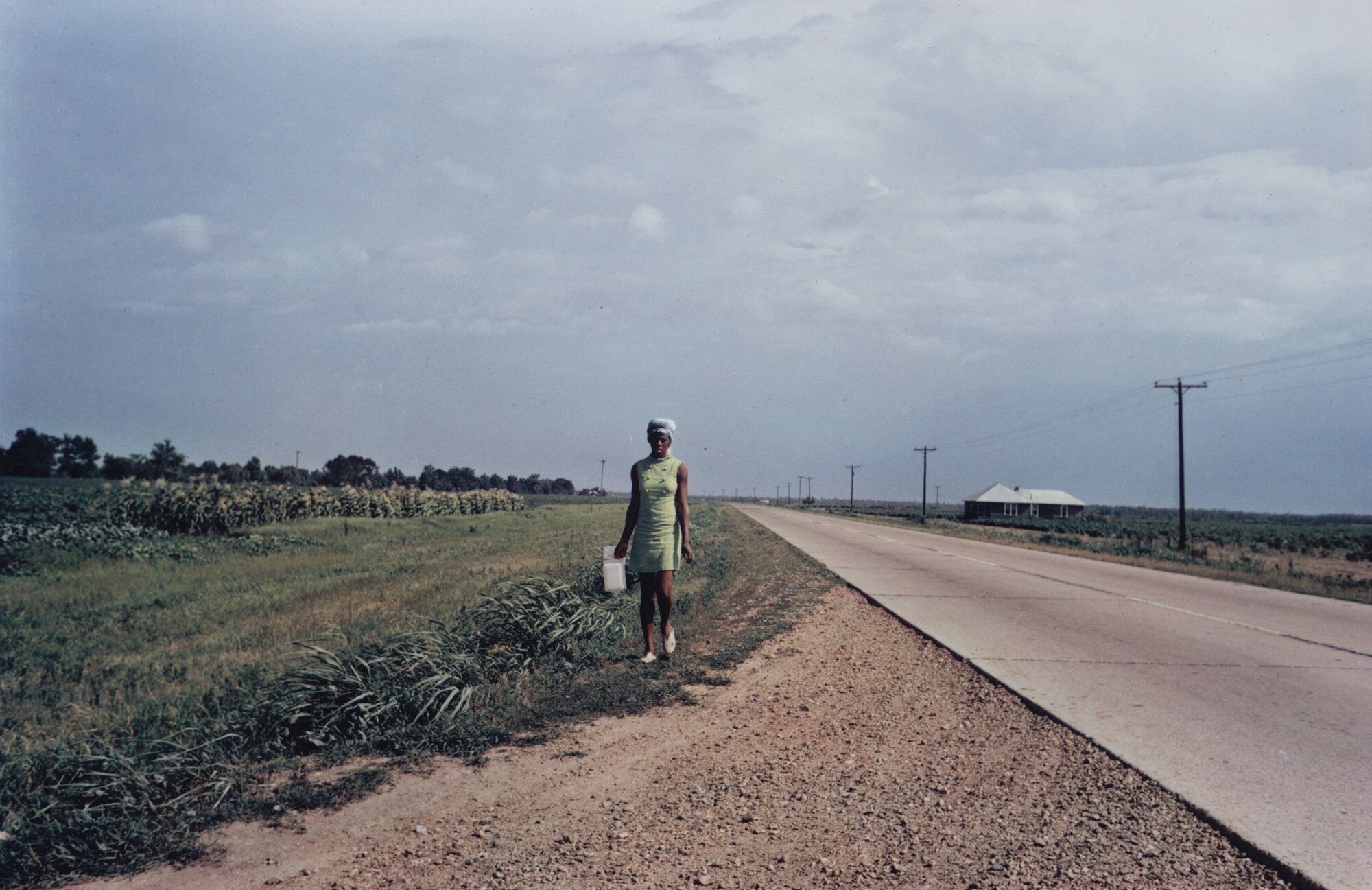William Eggleston - Mississippi's Dreamy Highways | By Rebekah Jacob
Interim studies at Ole Miss, I worked at the Southside Gallery, a progressive, white-walled shell in the heart of the Oxford Town Square, filled with works in various mediums by emerging and established artists from the American South and the Caribbean Isles. Known best for top, regional photography, its roster included southern greats like Jack Spencer, Martin J. Dain, and most significantly, William Eggleston.
William Eggleston was scheduled to visit the gallery late one spring afternoon and I was elated.
Of course I had seen the photographer in my youth. In an interview with Miss Rosen at Huck magazine, I described my memories:
“Eggleston was somewhat ethereal but evident in the Delta, cruising around and taking pictures. You would often see his car perched just off the road and sometimes spot him walking along the paved roads or wandering out in the fields. Some thought he was crazy, others didn’t care to wonder. But it was strange to see anything other than field hands or farmers speckled out in the middle of cotton fields. And there he was, sweeping a camera and capturing the soul of the land, in perfect aperture.”
But I had never met William Eggleston. A mormning after an early art history class, I darted home as quickly as possible to dress in gallery garb that is still a template of my professionalism today: a black turtleneck, leather pants, red stilettos, and red Chanel lipstick, with my hair pulled back in a low ponytail. Then I headed to the gallery.
The stress and rush of the preparations felt like those of a wedding. I scrambled to tidy the long, cubed space, patching any holes, vacuuming, and arranging fresh flowers from a client’s yard. The client, Miss Polly, was an avid gardener with lots of southern charm. An avid art collector, she arrived at the gallery with two baskets filled with fresh flowers, greenery, and bourbon. “Here y’all are,” she said graciously as she set the baskets on the counter. “Let me know if you can think of anything else. I must go…” “Why the rush?” I asked. “Because all this cash and jewelry in my bag is hurting my shoulder,” she affirmed.
It was the kind of nostalgic spring day in Oxford when girls skip class and exercise in packs, noting their tribes with Greek letters; when writers flood Square Book’s balcony; and the locals take longer-than-usual, unorthodox lunch sessions. Mr. Eggleston arrived true to his reputation. A southern aristocrat, he was dapper, wearing a high-end sports coat, buttoned shirt, and slacks. He was polite yet mercurial. He walked in with a small stack of photographs and placed them on a positioned table. He seemed to be magnetized by the piano, another mastered medium and passion. His innovative arrangement of classical music, played by memory with no score, echoed throughout the space so that few words could be heard, but our eyes were in sensory overload.
There it was: “Red Ceiling.” Eggleston rarely titles his work, so “Red Ceiling” is more of a derivation than a formal notation. The photograph, which I had only seen in books before that day, was taken at the home of his dear friend T.C., a dentist by profession and drug lover by recreation. The house was located on the outskirts of Greenwood, down an unmarked Delta highway. In one version of the photograph, T.C. is naked, his walls covered in graffiti. Another version—and the masterpiece for which I hunted—depicted the ceiling only. Eggleston snapped the picture while lying in bed with T.C. and his wife. Eggleston noted once that “‘Red Ceiling’ is so powerful, that in fact I’ve never seen it reproduced to my satisfaction. When you look at the dye it is like red blood that is wet on the wall.” Subsequently, in ensuing years, its dweller was brutally murdered, and the house burned to the ground. A sinister connotation? Perhaps.
“Red Ceiling” by William Eggleston is arguably the artist’s most famous image. The color is key—the ceiling and walls a deep, blood red. Eggleston uses the corner—the intersection of two walls and the ceiling in the low center of the shot—to create a sense of space. Just above the corner, slightly left of center in the image, is a light fixture with a bare bulb and an on/off chain. Three white extension cords plugged into the fixture and stapled to the ceiling lead out to the walls and sizzle against the ceiling color. Eggleston remembers shooting the image while lying in bed with friends, talking (that they also had been doing other things is implied), and the bottom edge of a poster depicting the positions of the Kama sutra in the photograph amplifies the sexual atmosphere. “I think red is a very difficult color to work with,” he said in an interview with BBC. “Red Ceiling” would become my most sought-after trophy as an art dealer.”
Red Ceiling was the catalyst to my obsession with William Eggleston but I would not stop with this photograph or this medium. While many dealers and collectors chase Eggleston dye-transfer photographs, I prefer to focus on and curate his chromogenic work: the intimate small format images the artist made while exploring rural towns along the Mississippi River. They seem to be the most free and intuitive parts of his expansive oeuvre, and I have spent much of my career spotlighting these intuitive interpretations of the land we both share.
His photographs carry so much. Beyond the technical masterful approach, there is something gothic and dark about each small images many times printed in a 5 x 7” format. Similar to Toulouse Lautrec’s underground subjects, his photographs depict a part of Mississippi that few ever know: a synthesis of whiskey, drugs, women, and guns. It’s a far cry from the nostalgically depicted aristocratic Delta life of antebellum homes, black servants, and debutante parties. These photographs are often radical, pornographic, apprehensive, and almost disconcerting. They radiate with dark forces and presents uneasiness and emptiness. They are tiny, poetic gems vividly capturing home, the Mississippi Delta.
“Eggleston was a link from the early 20th century artists to the present, modernising the medium in terms of printing and the use of colour,” Jacob says. “Although innovating the medium, he carried the voices of the Delta with integrity, patience, and sensitivity. He photographed the place and its peoples by sweeping the camera, so it has always been fascinating to see ‘my land’ variously angled and tightly formatted – like riding in a car with your head titled against its window.”





